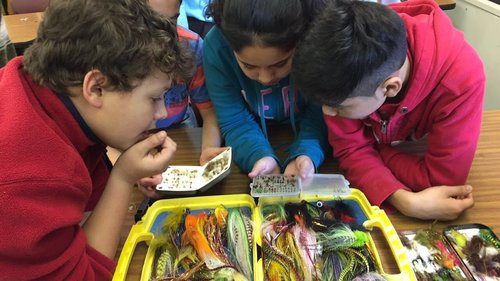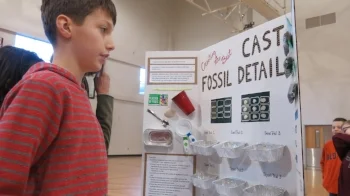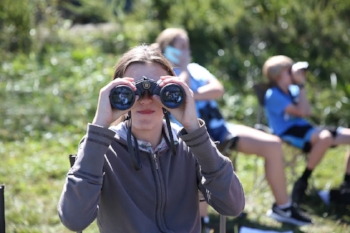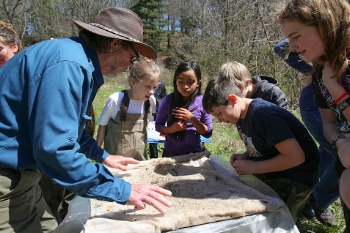

Happenings with BRDC in the Schools
Each month, BRDC shares elements of the natural history of the region with the students in elementary schools in Grayson and Washington Counties.

BRDC Science Fair - Grayson County Middle Schools
The fun and excitement continues as 246 students in Grayson County competed for prizes at the 3rd Annual BRDC Science Fair!

The 1st Annual BRDC Science Fair!
The First Annual Blue Ridge Discovery Center Science Fair brought together 6th and 7th grade students from Grayson Highlands, Independence, and Fries to compete for the grand prize- a Phantom 3 drone!

Learning about Amphibians & Aquatic Insects
BRDC has been busy with education programs, working with Galax Middle School, Fries School, Fairview Elementary, Grayson Highlands, Independence Elementary.
Grayson County's fourth grade students participated in the Natural Heritage Program with an emphasis on salamanders, toads, and frogs. Students learned about salamanders commonly found in the Blue Ridge.

BRDC Kicks Off New Science Fair!
We are excited to announce the 1st Annual BRDC Science Fair in partnership with Grayson County Public Schools! The Science fair is a chance for students to exercise their creative thinking skills, follow their curiosity, learn more about their interests and share their discoveries with others.

The Power of Owl Pellets
During the first week of November, Grayson County 4-H and BRDC teamed up to bring all of the 4th graders across Grayson County our famous owl pellet program.
It always begins with ew, yuck and gross, because the idea of dissecting something that was once inside a living bird, summons visions of poop or puke. We explain that an owl pellet is similar to a fur ball your house cat occasionally coughs up.

Mahogany Rock Hawk Watch
On September 23, thirty seventh graders from Grayson County Public Schools attended the Mahogany Rock Hawk Watch to experience the niche dedication of Hawk Counters and the mass migration of Broad-winged Hawks. Jim Keighton from the Blue Ridge Birders has been recording the migration of birds of prey for nearly twenty years! Each fall Jim sets up his swivel chair and interpretive displays along the parkway and begins scanning the sky. Not only does he diligently track the migration but he also takes the time to educate the passerby about the migration occurring overhead.

BRDC Partners with Grayson County Schools
We are pleased to announce our partnership with Grayson County Public Schools to connect local youth to the Blue Ridge through hands-on programs with students, providing grade specific SOL’s and STEM learning concepts. The $10,000 award from Grayson County Schools for the 2016-17 school year, supported by matching funds and volunteer support from BRDC, will reach students across the school system and enrich the public school experience through hands-on and interest-driven activities.